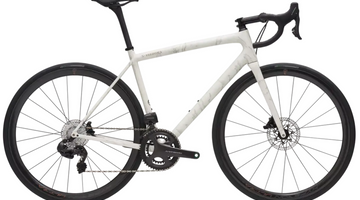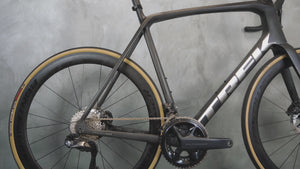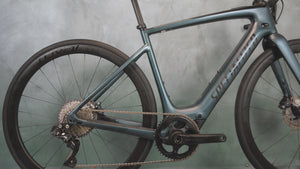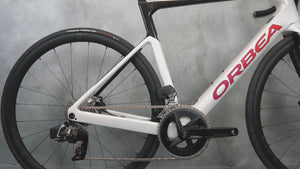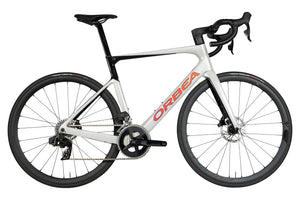Shimano Dura-Ace R9200 vs Sram Red Etap Axs
In this Article
Posted on April 4, 2022
Shimano Dura-Ace R9200 and Sram Red Etap Axs are two of the most fantastic and technologically advanced groups you can get. Representing the Grail of what the two largest components in the world can achieve, their rivalry is played in bicycle stores and WorldTour races around the world. Sram Red Etap Axs was launched in 2019 while Shimano Dura-Ace R9200 arrived on the stage in 2021.
This last launch allowed Shimano to catch up on SRAM and to offer a 12-speed transmission as well as a new semi-in-the-side operation. This update has also allowed Shimano to definitively move away from the mechanical speed change, which means that the upper market is now entirely belonging to electronic control groups.
The most recent change of SRAM focused on creating an improved range of options, in particular the possibility of operating ultra-large tapes with simple trays.
But how do the two groups position each other in relation to each other? Read the rest for the knowledge ...
Speed changes, ergonomics and settings
The two groups offer a good speed change, reliable overall, but the latest generation Shimano group before the Shimano group is the best in its category. The way in which the Dura-ace R9200 passes the chain from one tray to another is a pleasure for the eyes.
The Shimano Di2 controllers imitate their mechanical counterparts with two main buttons on each side.
The large button on the right controller of Shimano allows you to mount the speeds of the rear derailleur, while its smaller counterpart allows you to descend the speeds. On the left side, the large button allows you to pass on the large tray, while the small button allows you to descend.

Sram's approach can be more intuitive for some. By default, SRAM uses the right palette for speed changes to the top of the rear derailleur and the left for speed changes to the bottom of the rear derailleur. A simultaneous pressure on the two pallets allows you to go to the front derailleur. It is not easier to change speed.
The Sram and Shimano systems allow you to personalize the function of buttons in different ways, a function you can access via the application of each manufacturer. You can also choose to let the group take care of speed changes before you.
By creating a range of sequential speeds, Sram calls it "sequential speed change" while Shimano calls it "synchronized speed change" or "synchro".
The two brands also offer an intermediate option in which the cyclist takes care of changing the two derailleurs, but the system adds speed changes to the rear to accompany the front, which makes it possible to facilitate the progression between the speeds. Sram calls this "compensatory" mode, while Shimano calls it "semi-synchro".
In addition to the main combined selectors, the Dura-Ace and Red groups both offer distance speed change options.
Sram calls his pimples at a distance Blips. They were originally wired, but the brand has since launched wireless buls, which can be placed wherever you want.
Shimano satellite selectors, smaller, are only wired and exist in "drops" and "tops" versions to meet different needs.
Even if you do not choose to mount satellite controllers, the Dura-Ace levers incorporate additional buttons hidden on the top of the lever body. These can be assigned to speed change functions, or used to operate other devices such as Garmin GPS units.
Regarding ergonomics, the last Dura-Ace hydraulic levers have in fact increased in size. They are now longer, larger and higher, at the request of the professional runners of Shimano. However, the need to integrate the new wireless components and the replaceable battery inside can also have something to do with it. In any case, the new hoods offer a comfortable and natural position of the hand.
Likewise, the position and spacing of the buttons have been modified. Now easier to activate from the bottom, they follow the format established by Shimano by placing two pallets next to the other behind the blade of the brake lever.
Slightly larger than their competitors, the last SRAM levers will be very familiar to current users.

The Dura-ace and Red both have a adjustment of the range of the lever and the bite point (free race).
Cassettes and pedals
Although the two groups have passed at 12 speeds, the choice of speeds is an area where Sram Red and Shimano Dura-Ace diverge considerably. While Shimano offers a relatively traditional range of reports and configurations, Sram has some very intelligent tips.
First of all, Sram managed to reduce its smaller gable to 10 teeth. A single tooth less than the smallest gable of 11 teeth offered by Shimano, this innovation forces you to go to an XDR driver.
Fortunately, this new freewheel standard adapts to most existing wheels and opens the X-strang range of Sram.
This series of slightly narrowed double pedals and corresponding cassettes includes 50/37, 48/35, 46/33 and 43/30 options which can be associated with cassettes of 10-36T. By taking advantage of the smaller gable, they offer a wider range of speeds and lighter components.
They should also allow most cyclists to reduce unnecessary speed changes by helping them spend more time on the large plateau.

The other large novelty is the XPLR component of SRAM. These components specific to the Gravel allow cyclists to use cassettes to the phenomenal ratio of up to 10-44 with single chain pedals.
Available during the purchase or during a subsequent assembly, these new components extend the attraction of the group beyond the pure road. Whether you opt for a standard rear derailleur or XPLR type, you will also benefit from Sram orbit hydraulic amortization technology.
This mechanism, which is similar to a clutch, prevents the derailleur's arm from swinging on damaged terrain and should allow your chain to stay in place.
In comparison, Shimano's Dura-Ace group opts for more familiar technology with a range of 12-speed cassettes that can slip directly into your existing free wheel.

With only two 11-30 and 11-34 cassette options supported by a single rear derailleur, this simplified range always offers a much more user-friendly gear than the previous versions of the group.
For example, by combining the largest of the two cassettes with a 50/34 compact pedal, you will get a very low and free ratio 1: 1, which means that you will not need a professional level for professional level for Cross the mountains.
At the other end of the spectrum, Shimano introduced a new combination of 54/40 trays. Replacing the 53/39 configuration traditionally favored by runners, it offers enormous speeds and should be successful with pros and pros.
Braking
Although the Sram Red and Shimano Dura-Ace groups still offer brakes on traditional rim, most cyclists are now likely to use disc brakes.
You will not lack braking power with one or the other of the brands, but they distribute their braking strength somewhat differently.
Shimano brakes tend to have a more defined bite point, while Sram's are more subtle. The two brands are powerful enough to stop the bicycle in all conditions and the choice is a question of personal taste.
However, for amateur mechanics, Shimano could have the advantage, if only because its mineral oil braking liquid is less corrosive and better for the environment than the dot liquid used by SRAM.
Another small point of difference is that, with the retracted pistons, the clearance of the platelets is slightly larger with the Shimano brakes than with the Sram, which means that the friction of the disc is slightly less likely if the rotor is slightly twisted Or if dirt infiltrates the stirrup.
Appearance and design
It is above all a question of personal preference, but it is difficult to find one or the other of the ugly groups. With its super compact pedals, its distinctive flattop channel and its bulky derailleurs, the SRAM group is undoubtedly the most radical stylistic level.
In comparison, Shimano's dura-ace could almost be confused with a mechanical group, in particular because it is always necessary to connect the derailleurs to the central battery.

Reduction of wiring at the front means that the system is now a little smooth than its predecessor, however.
On the aesthetics, the two groups are rather angular. On the Shimano components, the finish is brighter, while Sram opts for a pleasant mixture of polished and matt finishes.
Autonomy, applications and daily
Another major difference between systems is their diet. By opting for an entirely wireless system, Sram has favored ease of installation.
Thus, the front and rear derailleurs are powered by their own batteries, each staring directly to the rear of the derailleur. These feeding blocks should allow you to drive about 60 hours before you need to be recharged.
If a derailleur falls flat before the other, you can exchange the batteries to obtain some additional gear changes. The levers of the levers of the levers should last about two years.
In comparison, Shimano uses a central battery to power the two derailleurs, with wiring passing through the frame to the battery mounted in the stalk.
The load is carried out through a port located on the rear derailleur and you will need to enter the entire bike to recharge the battery.
Shimano estimates that the central battery will allow you to travel around 1,000 km, while the levers of the levers of the levers should last from 1.5 to 2 years, figures quite similar to those of Sram.
Shimano users wishing to further increase their autonomy can also choose to connect gear levers directly to the battery. Shimano claims that this will increase the autonomy by 50 %, making it a good option for distracted people or those who leave for long hikes.
For a long time, Sram was ahead of Shimano with regard to connectivity. The last Dura-Ace group is remedying this by now connecting directly to your phone without requiring additional equipment. The AXS application of SRAM, which allows you to assign buttons and check other aspects of performance, does the same for its parts and has slightly better graphics. Both applications are compatible with iOS and Android.
Weight
There is no standard method for weighing groups, so it is difficult to offer a real comparison between the Red Etap Axs and the Dura-Ace R9200, in particular given their different transmission and accessories options.
However, manufacturers have improved by providing significant figures, and Shimano and Sram have a fairly good reputation for providing specific weights.
If we rely on the figures provided by the brands for apparently very similar configurations, a complete group with Shimano R9200 discs without power meter weighs 2439 g, while a complete group Sram Red Etap Axs weighs 2,518 g.

It is interesting to note that the two manufacturers share the weight differently, the Sram carbon pedals being lighter than the aluminum model of Shimano, but the Shimano controllers being lighter than those of Sram. Unsurprisingly, the two groups represent the lightest parts made by each manufacturer.
Price
By launching their respective groups, Sram and Shimano wanted to test the maximum that people were ready to pay. After all, both represent the top of the market.
After the world pandemic, shortages in the supply chain, inflation and massive monetary fluctuations, these groups are not only expensive, they are really very expensive.
This is perhaps the reason why the two brands have covered their bets by including almost exactly the same technology on their second-class force and Ultegra groups, the prices of which are more reasonable.
However, if you want to have the best components available, the current price of the Red Axs group from SRAM in double chain format with disk brakes is € 3500. When it was launched, the SHIMANO DURA-ACE Group was offered at € 4,000.
Shimano Dura-ace vs. Sram Red: which one is the best?
These are two exceptional groups that deserve to appear on the best bikes. All well considered, it is difficult to say which is the best.
Fully wireless, the Sram Red group is incredibly friendly. Its operation with a single button by lever is also very intuitive, and it also offers the most complete range of transmission options.

However, we believe that the Dura-ace group of Shimano has a slight advantage in terms of speed change. It is not as versatile as the RED but, as a pure road race, it is difficult to beat.
Regarding the weight, Shimano prevails again, but by such a weak margin that we would not really take into account in our decision.
Sram wins on the cost (and current availability). The battery life is comparable, but Shimano can increase it significantly by renouncing its wireless functionality. A tip that Sram takes place; It is nevertheless more suitable for managing without any electrical cable.
In the end, personal tastes play an important role and you should choose the group whose ergonomics, speed change, gear options and aesthetics please.

That said, we think that the latest generation of Dura-ace has a small advantage, but significant, in terms of performance, and all other things being equal, it is the one we would choose.














